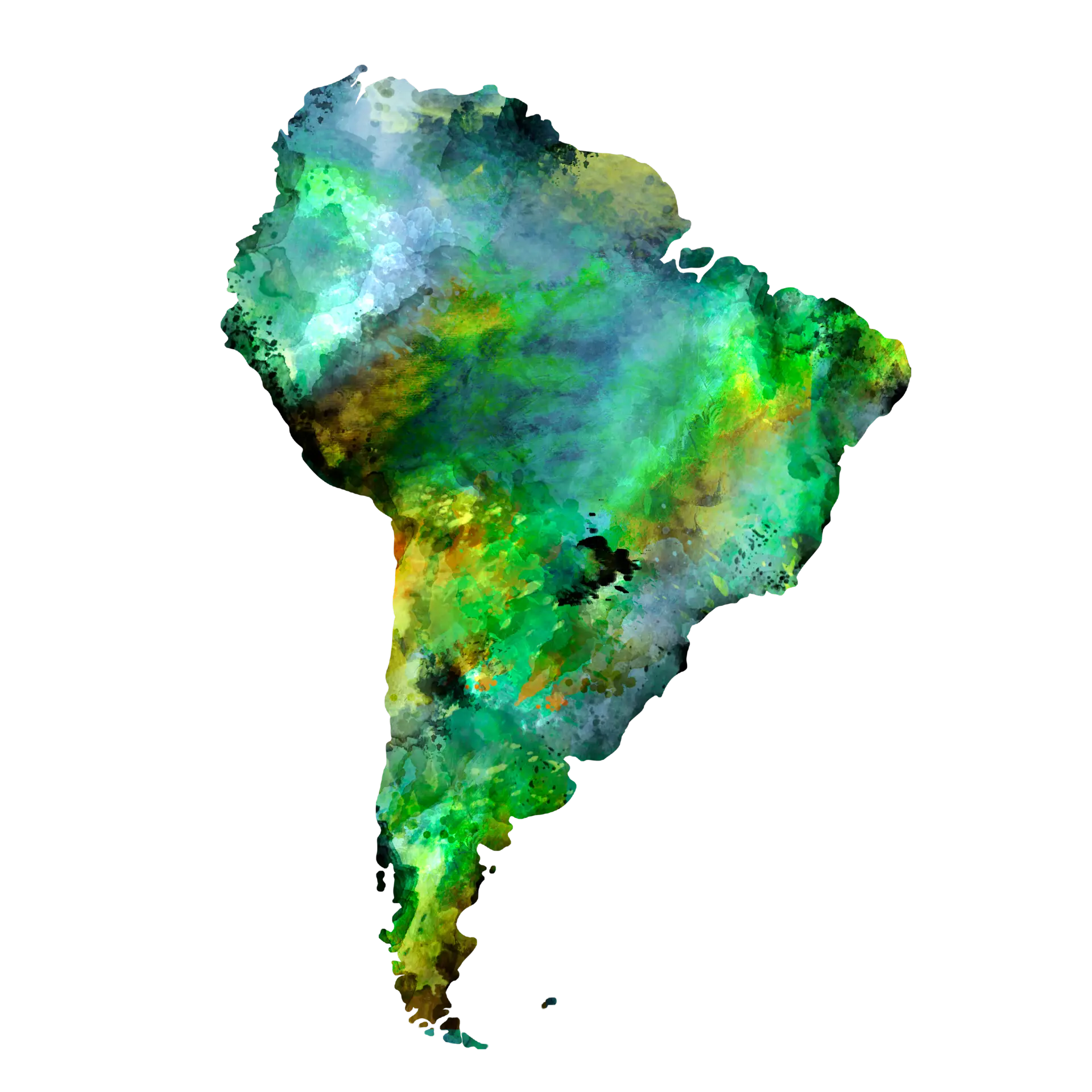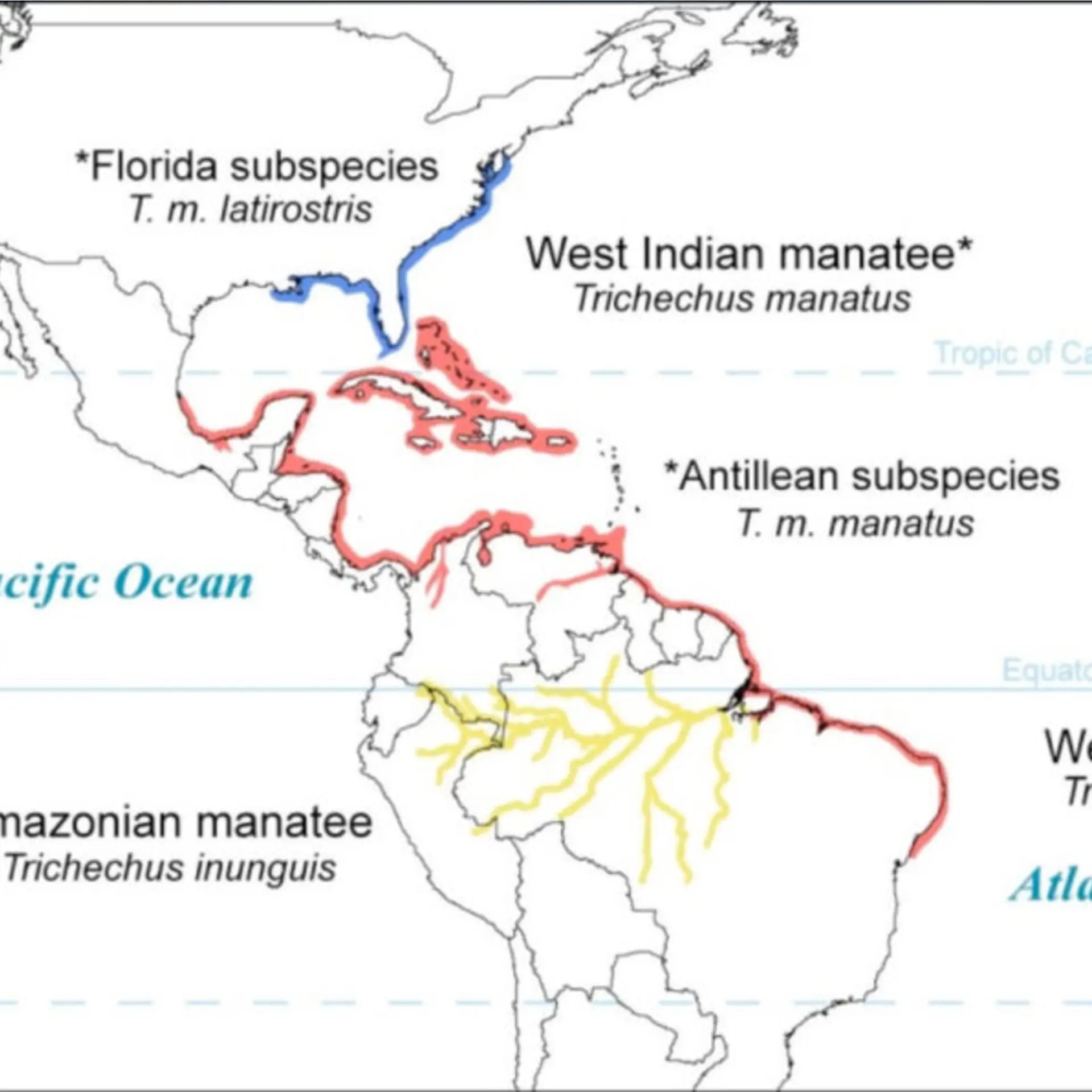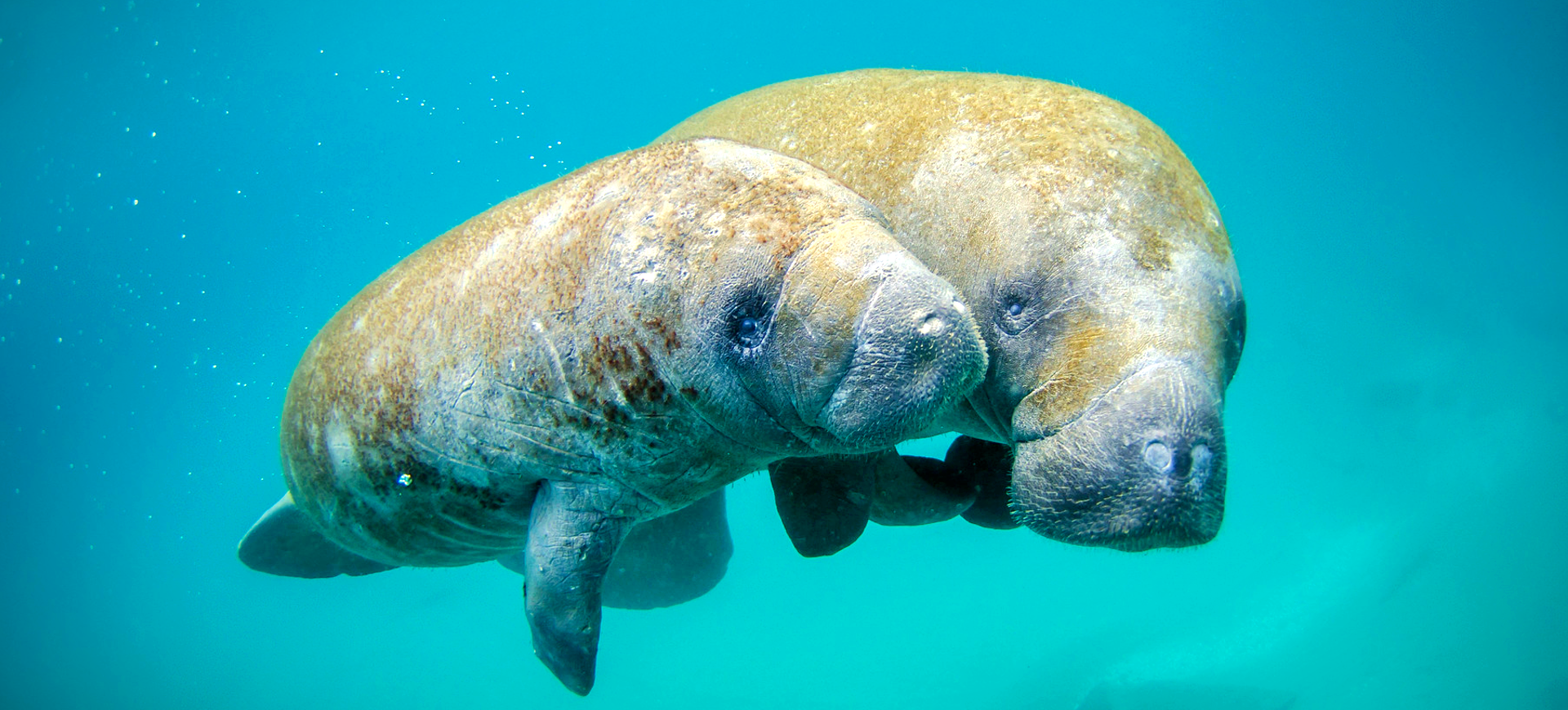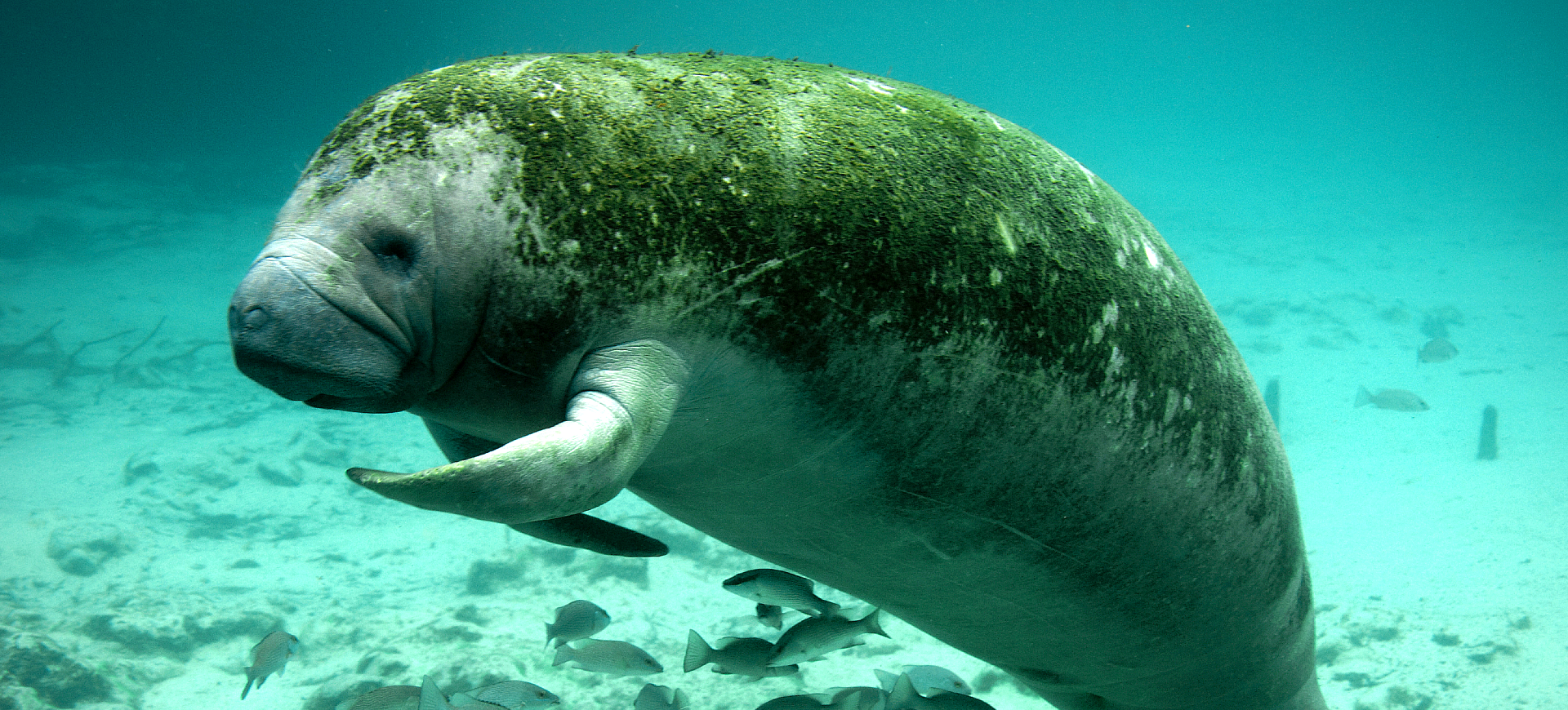Overview
The Antillean Manatee (Trichechus manatus manatus), a subspecies of the West Indian Manatee, is a remarkable marine mammal found in the coastal waters and rivers of the Caribbean Sea and the Atlantic Ocean. This gentle giant is known for its slow-moving, peaceful demeanor, and its diet primarily consists of aquatic vegetation, making it a crucial component of its ecosystem. The Antillean Manatee is characterized by its large, elongated body with grayish-brown skin, a paddle-shaped tail for propulsion, and two front flippers that aid in maneuvering and feeding.
These manatees are often found in shallow, warm waters such as estuaries, lagoons, and coastal areas with abundant seagrasses and freshwater vegetation. Despite their size, Antillean Manatees can navigate complex aquatic environments, including narrow river channels. They are solitary creatures, although they occasionally gather in small groups, especially in areas with plentiful food sources or during the breeding season.
The conservation status of the Antillean Manatee is of significant concern due to threats including habitat loss, water pollution, and collisions with watercraft. Their slow reproductive rate, with females giving birth to only one calf every two to five years, further complicates population recovery efforts. Conservation initiatives focused on habitat protection, law enforcement to reduce human-induced mortality, and public awareness campaigns are crucial for the survival of this subspecies.
Taxonomy
Kingdom
Phylum
Class
Order
Family
Genus
Species
Sub Species
Type
Current distribution:
The Antillean Manatee's distribution spans from the southeastern Gulf of Mexico and the Caribbean Sea to the northeastern coast of South America, including countries such as Mexico, Belize, Colombia, and Brazil. Their fragmented populations are often isolated, making them vulnerable to local extinction due to habitat degradation and human-induced threats.
Conservation initiatives aimed at protecting the Antillean Manatee have been implemented in several countries within its range. These initiatives focus on habitat preservation, reducing human-related mortality, and enhancing public awareness of the species' plight. Despite these efforts, the subspecies remain at risk, and continued conservation actions are critical for survival.
Physical Description:
Antillean Manatees are distinguished by their robust and streamlined bodies, which can measure up to 13 feet in length and weigh as much as 1,300 pounds, although average sizes are generally smaller. Their skin is thick and wrinkled, often grayish-brown and sometimes adorned with algae, giving them a greenish tint. Notable for their expressive faces, they have small eyes and a pronounced snout equipped with vibrissae (whiskers) that enhance their sense of touch.
These manatees possess a pair of front flippers for steering through the water, manipulating food, and occasionally “crawling” along the bottom. Their large, flat, paddle-shaped tail is a powerful tool for propulsion, allowing them to glide gracefully through their aquatic habitat. Despite their bulky appearance, Antillean Manatees are capable of delicate and precise movements in their pursuit of food and exploration of their environment.

Lifespan: Wild: ~40 Years || Captivity: ~60 Years

Weight: Male: 1,200-3,000 lbs (540-1,360 kg) || Female: 800-1,200 lbs (360-540 kg)

Length: Male: 120-156 in (304-396 cm) || Female: 108-120 in (274-304 cm)

Top Speed: 20 mph (32 km/h)
Characteristic:
Native Habitat:
The Antillean Manatee is native to the coastal and inland waters of the Caribbean Sea and the northeastern Atlantic Ocean, ranging from the southern United States and Mexico down to Central America and the northern coast of South America, including the Amazon Basin. They inhabit warm, shallow environments, including rivers, estuaries, lagoons, and coastal marine areas.
These habitats provide the warm temperatures and abundant vegetation crucial for the manatee’s survival. Antillean Manatees are dependent on freshwater sources for hydration and are often found near river mouths and areas where freshwater springs enter the ocean.
Biomes:
WWF Biomes:
Biogeographical Realms:
Continents:
Countries:
Diet:
Diet & Feeding Habits:
Antillean Manatees are herbivorous, feeding on a diverse diet of submerged, emergent, and floating aquatic plants. They consume a variety of vegetation, including seagrasses, mangrove leaves, and freshwater species, adapting their diet based on seasonal availability and habitat. These manatees feed along the sea floor, using their flexible, prehensile lips to grasp and manipulate food items.
Feeding habits play a critical role in the ecosystem, as Antillean Manatees help maintain healthy aquatic environments by controlling plant growth and promoting water flow in dense vegetation areas. They spend a significant portion of their day grazing, requiring large quantities of vegetation to support their sizeable bodies.
Mating Behavior:
Mating Description:
Antillean Manatees exhibit a polygynous mating system, where males compete to access females during the breeding season. Females may mate with multiple males, forming mating herds that can include a dozen or more individuals. The gestation period for the Antillean Manatee is approximately 12 to 14 months, culminating in the birth of a single calf.
The bond between a mother and her calf is strong and enduring, with the calf relying on its mother for nutrition and protection for up to two years. This extended period of dependency, combined with a long gestation and intervals of two to five years between births, contributes to the slow population growth rate of the Antillean Manatee, underscoring the importance of each individual’s survival for the subspecies’ conservation.
Reproduction Season:
Birth Type:
Pregnancy Duration:
Female Name:
Male Name:
Baby Name:
Social Structure Description:
Antillean Manatees, much like their relatives in other regions, lead mostly solitary lives or form small, loosely associated groups that graze and travel through the Caribbean’s warm waters. However, this behavior shifts noticeably during the mating season when manatees gather in larger aggregations, a social structure that facilitates breeding and highlights their communal tendencies during certain times of the year. The bond between a mother and her calf is particularly strong and enduring, with the calf relying on its mother for nutrition, protection, and learning essential survival skills. This extended period of dependency, often lasting up to two years, is crucial for the calf’s development and survival, ensuring it acquires the necessary knowledge and skills to thrive in its aquatic environment.
Social interactions within these groups or between mother-calf pairs are gentle and collaborative, showcasing the manatees’ inherently peaceful nature. Through gentle touching, vocalizations, and synchronized movements, manatees communicate and maintain social bonds, behaviors that are vital for their mental and emotional well-being. These interactions not only facilitate the cohesion and stability of manatee groups but also play a significant role in the social development of calves. The peaceful and cooperative nature of Antillean Manatees underscores the importance of preserving their natural habitats, free from disturbances that could disrupt these critical social behaviors.
Groups:
Conservation Status:
Population Trend:
The Antillean Manatee, a subspecies of the West Indian Manatee, faces significant conservation challenges that have led to its classification as vulnerable, with populations experiencing a decreasing trend. The primary threats contributing to their decline include habitat loss from coastal development and industrial activities, water pollution from agricultural runoff, boat strikes that often result in serious injury or death, and entanglement in fishing gear, which can lead to drowning or restricted movement. These factors diminish the manatees’ numbers and severely impact their natural behavior and habitat use, further complicating their chances for recovery.
Estimating the exact number of Antillean Manatees remaining in the wild is complex due to their wide distribution across the Caribbean Sea and adjacent coastal areas. The dispersed nature of their populations and the turbid and often inaccessible areas they inhabit pose significant challenges for researchers attempting comprehensive surveys. Consequently, conservation efforts must navigate these uncertainties to implement effective strategies for protecting and monitoring the Antillean Manatee, emphasizing the importance of local and international collaboration in addressing the myriad threats they face.
Population Threats:
Antillean Manatees, distributed throughout the Caribbean’s and adjacent regions’ marine and freshwater systems, are increasingly vulnerable due to a myriad of human-induced threats. Coastal development destroys their natural habitats, crucial for feeding, mating, and nursing their young, disrupting their life cycles and diminishing their chances for survival. Additionally, pollution stemming from agricultural runoff and industrial activities introduces harmful substances into the water, degrading the quality of their environment and affecting the health and availability of aquatic vegetation, their primary food source. These issues are compounded by the risks of collisions with watercraft, which often result in serious injuries or fatalities, and entanglement in fishing nets and gear, which can lead to drowning or severe distress for these gentle giants.
The long-term impacts of climate change further exacerbate the challenges faced by Antillean Manatees, altering the ecosystems that support them in ways that are not fully understood but are expected to be detrimental. Rising sea levels and changing water temperatures can lead to shifts in the distribution of seagrass beds and other critical food sources. At the same time, increased frequency and severity of storms may destroy the coastal and estuarine habitats where manatees find shelter. As these environmental changes continue, the resilience of Antillean Manatee populations will be tested, underscoring the urgent need for comprehensive conservation strategies that address both immediate threats and the overarching challenges posed by climate change.
Conservation Efforts:
Conservation efforts for the Antillean Manatee have been multifaceted, focusing on protecting and restoring their natural habitats to ensure these gentle giants have safe areas to feed, mate, and migrate. Legislation to regulate boat traffic in manatee-inhabited waters aims to reduce the number of collisions, one of the leading causes of mortality for these marine mammals. Additionally, restrictions and regulations on fishing practices have been implemented to prevent entanglement in fishing gear, a significant threat to manatee health and safety. Public education campaigns complement these efforts by raising awareness among local communities and tourists about protecting the Antillean Manatee and encouraging responsible behavior near their habitats.
International cooperation emerges as a critical factor in the conservation of the Antillean Manatee, recognizing that the preservation of this subspecies is a shared responsibility that transcends national borders. Their range extends across several countries, each with unique challenges and capacities for wildlife protection, making collaborative approaches essential for effective conservation. Rehabilitation programs are crucial in these efforts, offering care and recovery options for injured manatees. At the same time, ongoing research into their ecology and behavior provides valuable insights that guide conservation strategies. By understanding the complex needs and threats facing the Antillean Manatee, conservationists can develop more effective measures to ensure their survival and the health of the ecosystems they inhabit.
Additional Resources:
Fun Facts
- Antillean Manatees can consume up to 10% of their body weight in vegetation daily.
- They have a low metabolic rate and require warm water to survive, seeking out areas above 68°F (20°C).
- Manatees have no natural predators in the wild and are only threatened by human activities.
- They can hold their breath for up to 20 minutes but typically surface every 3-5 minutes to breathe.
- The closest living relatives of manatees are elephants and hyraxes, sharing a common ancestor.
- Antillean Manatees are known for their excellent long-term memory and have been observed to remember feeding and warm-water refuge locations.
- Despite their size, manatees are agile swimmers, capable of precise movements in their aquatic environment.
- The vocalizations of manatees can be complex and are used for communication, especially between mothers and calves.
- They play a crucial role in their ecosystem, helping to maintain healthy aquatic vegetation and water quality.
- Conservation efforts for the Antillean Manatee are supported by international agreements and local conservation groups dedicated to protecting these majestic creatures and their habitats.












